Posted by Leslie Holt on June 20th, 2007
The “tradition” of using non-traditional materials and found materials in art goes back awhile – from Braques and Picasso’s collages to Duchamp’s urinal. By now we are accustomed to seeing everyday things in the museums or galleries For me, the use of non traditional or found materials has to transform that material so that it becomes something else than the novelty of the material itself. A couple of artists came to mind when thinking about this today. I recently discovered and artist named Il Lee.
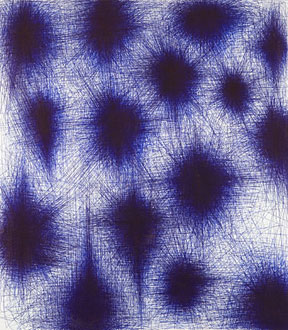
BL-069, 2006, Ballpoint pen on canvas, 48 x 42 inches more… »
Posted by Leslie Holt on April 18th, 2007
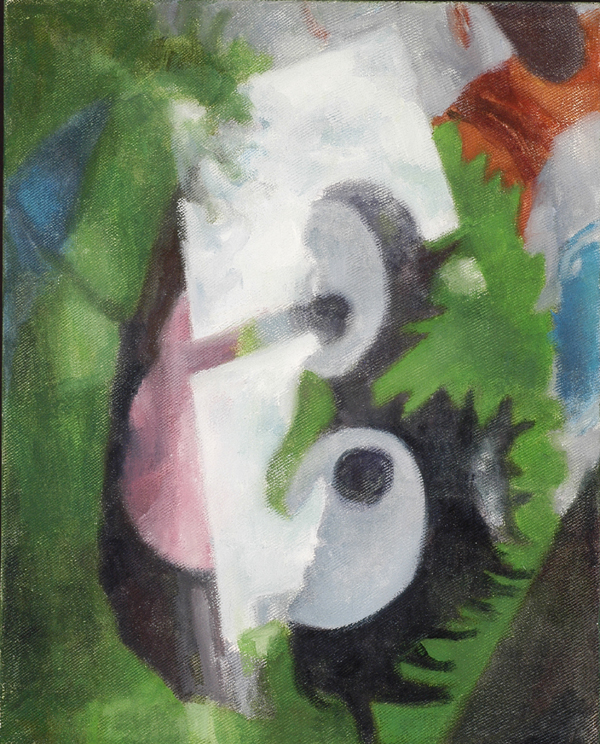
Steve’s previous post made me think about mystery and ambiguity in art, particularly as they help to create meaning. And his image reminded me of this recent image I made as part of my “Unholy Gost” series. I use ambiguous spaces and images in this series of paintings.
I talk to my students about the difference between “deliberate ambiguity” and disorganized confusion. While I encourage the happy accidents that occur in the process of creation, it can sometimes be an excuse to leave a piece unfinished, unclear and incoherent. Beginning students often want to make images that deal with the idea of chaos, but end up making disorganized messes. Mysterious images can so easily be so ambiguous as to be unreadable with no entry way into the work.
These can be pitfalls of art making. How can you tell if ambiguity is purposeful or if it reflects lack of clarity on the artist’s part?
Have you explored ambiguity in your own work? What are the challenges you face when doing so? Do you have any favorite artists who use ambiguity successfully?
PS – I tried to make the image larger, I swear, and the best I could do was a thumbnail you can enlarge. Anyone can go in and fix it if they are so inclined. I apologize for my ineptitude.
Posted by Leslie Holt on April 4th, 2007
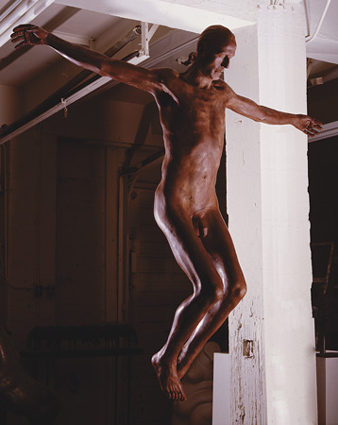
Ok, I couldn’t resist.
Not only do I love chocolate, but I love good art controversy. Artist Cosimo Cavallaro has created 6-foot Jesus statue made out of milk chocolate and called it “My Sweet Lord” or “Sweet Jesus” that was to be put on display this Holy Week in an art gallery attached to the Roger Smith Hotel in New York City. The gallery director ended up pulling the piece, due to pressure from the public and the Catholic Archdiosese. more… »
Posted by Leslie Holt on February 21st, 2007
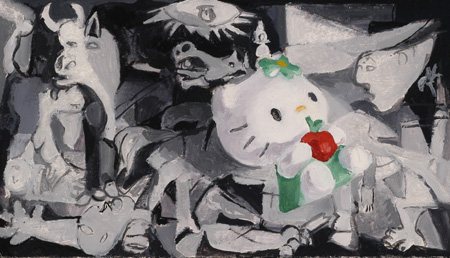
Whose culture is it anyway? more… »
Posted by Leslie Holt on January 25th, 2007

Hello Goya, oil on canvas, 4×6 inches
Ok, here is some of my art about art, or, art that refers to art, at least.
Tonight when I was thinking of what to write about these images, I thought about the word “juxtaposition.” Merriam Webster defines it as: “the act or an instance of placing two or more things side by side.” I remember learning this word in high school English class and being delighted by the concept. Four from this series of paintings are currently in a juried show called “Dislocations,” which is defined as a “disruption of an established order.” This is perhaps a “hipper” way to express a similar idea.

Hello Matisse, oil on canvas 4×6 inches
So if I leave you with those two words and these two images – what do you make of it? I ask because I wonder what viewers who go to see this show somewhere in the state of Maryland will get from these images. Do you need to know Hello Kitty, Goya, or Matisse to appreciate these images? The idea of leaving out someone who may not know a reference seems antithetical to my main purpose. And is this art disrespectful towards Goya and Matisse? To Hello Kitty? Is this a conundrum? :)
Posted by Leslie Holt on January 5th, 2007
I used to hate artists who refer to art historical images, whether through appropriation or more subtle reference. It struck me as elitist and dull. Why don’t they make their own images? And aren’t they attracting a really limited audience? But now I myself have started a new series with the aforementioned dreaded art historical references, and I am fascinated with other artists who do it.
Yasumasa Morimura is a Japanese artist who recreates scenes from famous paintings and inserts himself in the “protagonist” position. His end products are photos in which he pretty faithfully reproduced the painting, but with himself in it, often as a woman.
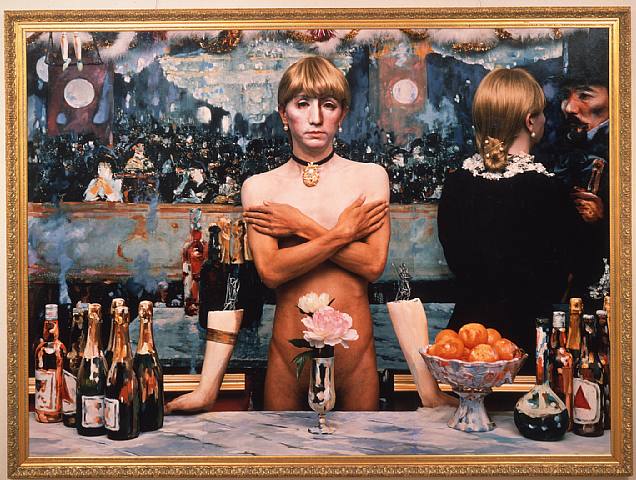
more… »
Posted by Leslie Holt on December 8th, 2006
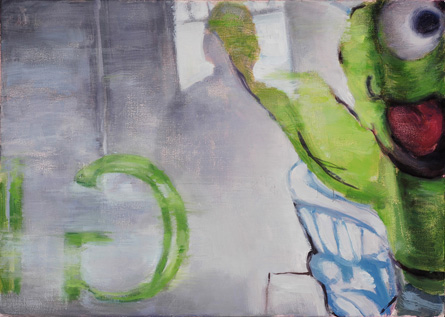
Unholy Ghost (Interior View Grouch) 2004 Oil on canvas 12 x 16 inches
I thought for my first post I’d just get reactions to this painting. It is one of the first in an ongoing series of paintings that seem to be teetering between representation and abstraction.
I was thinking along the lines of a thread from a little while ago when we were talking about the meaning behind Colin’s photo of the hands. I mentioned “visual clues,” and David thought that a discussion of that idea could be a post by itself. Are there clues in this piece that help you make sense of it? Or make you look more? I will be working most of the day tomorrow, but will respond when I can…







